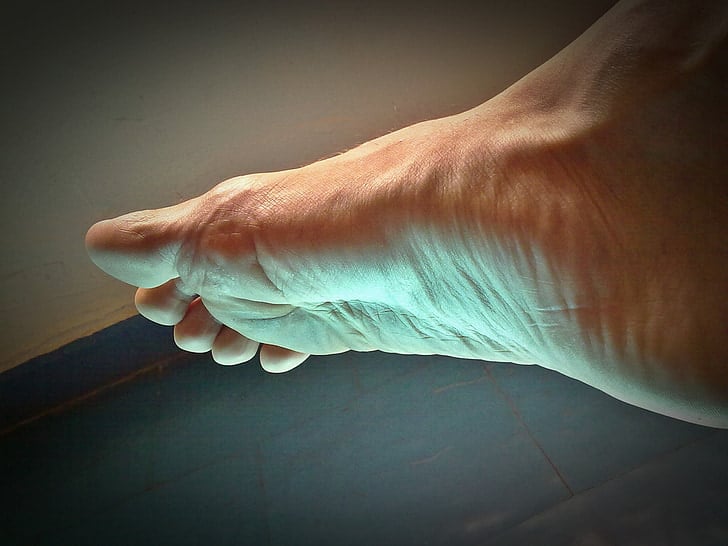(Image Credit: PickPik)
The structure of our feet plays a crucial role in our overall foot health and biomechanics. While many people have a “normal” arch, others may possess a high arch, also known as pes cavus.
In this short post, we’ll explore the characteristics and indicators of a high foot arch, helping you understand your foot structure and providing steps to help you identify if you have this unique arch type.
What is a High Arch?
A high arch is a foot condition characterized by an exaggerated arch shape, where the midfoot area is raised off the ground. Unlike a flat foot with minimal or no arch, a high arch creates a distinctive curve in the foot’s middle portion.
Signs and Indicators of a High Arch
- Visible Arch Height: One of the most apparent signs of a high arch is the visible height of the arch when standing barefoot. It may appear significantly raised compared to the rest of the foot.
- Footprints: Take the “wet test” by stepping on a surface that will show your footprints, such as a wet towel or paper bag. If you observe a narrow, curved footprint with a noticeable gap between the heel and the ball of the foot, it suggests a high arch.
- Foot Pain and Instability: Individuals with high arches may experience foot pain and instability due to the excessive pressure placed on the ball and heel of the foot. This can contribute to issues like plantar fasciitis, ankle sprains, and instability while walking or running.
- Limited Foot Flexibility: High arches are often associated with reduced flexibility in the foot. If you find it challenging to flatten your foot when standing or struggle to touch the floor with your toes while sitting, it may indicate a high arch.
- Shoe Wear Patterns: Take a close look at the soles of your shoes. If you notice excessive wear on the outer edges, especially in the heel and ball of the foot areas, it could be a result of a high arch not absorbing shock efficiently.
Effects and Considerations
While having a high arch is not inherently problematic, it can pose certain considerations, including:
- Increased Risk of Foot Injuries: High arches may contribute to a higher risk of foot injuries due to reduced shock absorption and stability.
- Foot Conditions: High arches can be associated with various foot conditions, such as metatarsalgia (forefoot pain), claw toes, hammertoes, and ankle instability.
- Shoe Selection: Finding properly fitting shoes can be challenging for those with high arches. Look for footwear with adequate arch support, cushioning, and a wider toe box to accommodate the foot shape.
Supporting a high arch is essential for maintaining foot comfort and preventing potential issues. When it comes to footwear, opt for shoes with proper arch support or you can buy arch support insoles. Regular stretching exercises for the calves, Achilles tendon, and the plantar fascia can help improve flexibility and alleviate tension in the foot.
Consulting with a healthcare professional or a podiatrist can provide valuable guidance on the best ways to support your high arch and ensure optimal foot health.
Conclusion
Determining if you have a high arch involves a combination of visual indicators, footprints, pain symptoms, and flexibility assessments.
If you suspect you have a high arch or experience foot discomfort, it is advisable to consult with a healthcare professional or a podiatrist who can provide a comprehensive evaluation and offer appropriate recommendations for managing any associated foot conditions.
Understanding your foot structure empowers you to make informed decisions about footwear, exercise routines, and proactive measures to maintain healthy and happy feet.


